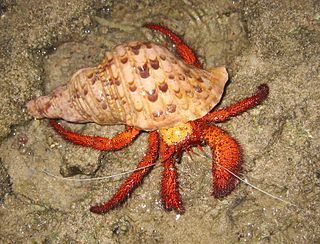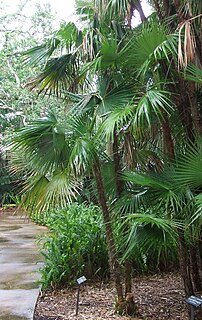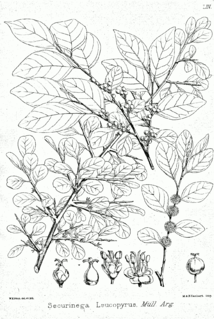
The peony or paeony is a flowering plant in the genus Paeonia, the only genus in the family Paeoniaceae. Peonies are native to Asia, Europe and Western North America. Scientists differ on the number of species that can be distinguished, ranging from 25 to 40, although the current consensus is 33 known species. The relationships between the species need to be further clarified.

Anomura is a group of decapod crustaceans, including hermit crabs and others. Although the names of many anomurans include the word crab, all true crabs are in the sister group to the Anomura, the Brachyura.

Pseudovanilla, commonly known as giant climbing orchids, is a genus of eight climbing orchids in the family Orchidaceae. Orchids in this genus have tall climbing stems with clinging roots, leaf-like bracts and branching flowering stems with colourful, spreading sepals and petals. Species in the genus are native to Indonesia, the Philippines, New Guinea, Australia, Solomons, Micronesia and Fiji.
Xenocytaea is a genus of spiders in the family Salticidae (jumping spiders).
Xenocytaea triramosa is a jumping spider.
Xenocytaea zabkai is a jumping spider.
Xenocytaea daviesae is a jumping spider.
Xenocytaea maddisoni is a jumping spider.

Zombia antillarum, commonly known as the zombie palm, is a species of palm tree and the only member of the genus Zombia. It is endemic to the island of Hispaniola in the Greater Antilles. Usually found in dry, hilly areas of northern and southern Haiti and the northwest of the Dominican Republic, Z. antillarum is a relatively short fan palm with clustered stems and a very distinctive appearance caused by its persistent spiny leaf sheaths. Threatened by habitat destruction in Haiti, Z. antillarum is a popular ornamental species due to its distinctive appearance, low maintenance requirements and salt tolerance.

Thalassina is a genus of mud lobsters found in the mangrove swamps of the Indian Ocean and western Pacific Ocean. Its nocturnal burrowing is important for the recycling of nutrients in the mangrove ecosystem, although it is sometimes considered a pest of fish and prawn farms.

Flueggea, the bushweeds, is a genus of shrubs and trees in the family Phyllanthaceae first described as a genus in 1806. It is widespread across much of Asia, Africa, and various oceanic islands, with a few species in South America in on the Iberian Peninsula.
Stilla anomala is a species of sea snail, a marine gastropod mollusk in the family Raphitomidae.

Cephaloziaceae is a family of liverworts.
Hozbeka is a monotypic moth genus in the family Oecophoridae erected by Hüseyin Özdikmen in 2009. Its only species, Hozbeka anomala, was described by John Frederick Gates Clarke in 1978. It is found in Chile.
Xenocytaea stanislawi is a jumping spider species in the genus Xenocytaea. It was first identified in 2011 by Barbara Maria Patoleta.
Xenocytaea taveuniensis is a jumping spider species in the genus Xenocytaea. It was first identified in 2011 by Barbara Maria Patoleta.
Xenocytaea victoriensis is a jumping spider species in the genus Xenocytaea. It was first identified in 2011 by Barbara Maria Patoleta.
Xenocytaea vonavonensis is a jumping spider species in the genus Xenocytaea. The male was first identified in 2011 by Barbara Maria Patoleta. The female has not been described.
Asterias rathbuni is a starfish native to the Pacific coasts of Alaska in the United States and Far East Russia. There are two subspecies.






